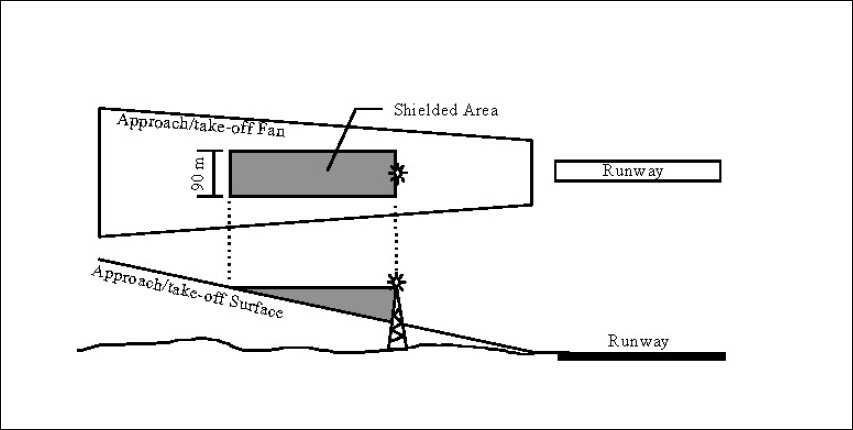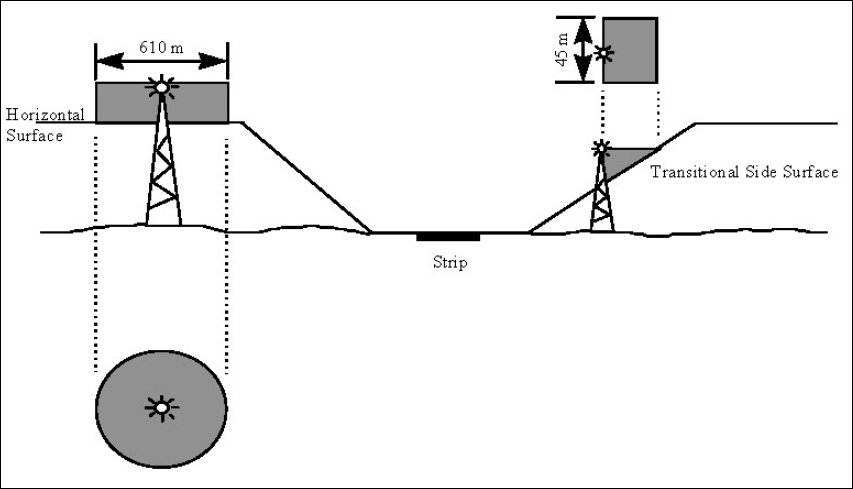Download the PDF consolidation of Part 77 [PDF 325 KB]
(a) An object that is determined by the Director to be a hazard in navigable airspace may not be required to be marked or lighted if the Director considers the object to be shielded.
(b) An object that is a lower height than another object—
(1) already considered to be a hazard in navigable airspace; and
(2) that is marked by standard obstacle marking or lighting— may be considered to be shielded by the other object.
(c) An aeronautical study may be required to determine whether an object that penetrates an obstacle limitation surface is shielded.
(d) A shielding object must be permanent.
(e) For the purposes of paragraph (d) an object may be classed as permanent only if, when taking the longest view possible, there is no prospect of removal being practicable, possible, or justifiable, regardless of how the pattern, type, or density of air operations might change.
(f) Where the obstacle being shielded lies within the approach or take-off surface, or the transitional side or inner horizontal surface, it must meet the criteria illustrated in figures C.1 and C.2 in relation to the shielding object.
(g) Where the obstacle lies outside of the areas referred to in paragraph (e) it may be considered shielded if located within 600 m of the shielding object.

